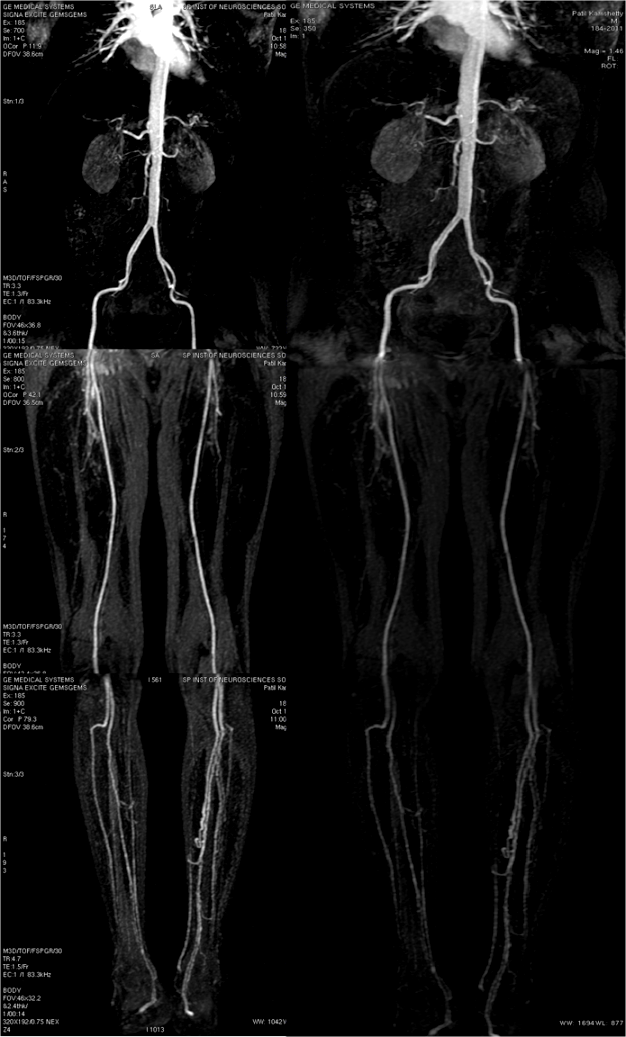Spinal Fistula

A spinal fistula is a rare and complex medical condition that involves an abnormal connection between the spinal cord or its surrounding structures and a blood vessel. This connection, often referred to as a fistulous tract, allows for the leakage of cerebrospinal fluid (CSF) and can lead to a range of neurological symptoms and complications. Understanding the intricacies of spinal fistulas is crucial for healthcare professionals and patients alike, as early detection and appropriate management can significantly impact outcomes.
Understanding Spinal Fistulas

Spinal fistulas, also known as dural arteriovenous fistulas (DAVFs) or spinal arteriovenous malformations (AVMs), are typically characterized by an abnormal connection between an artery and a vein within the spinal cord or its surrounding dura mater. This abnormality disrupts the normal flow of blood and cerebrospinal fluid, leading to a variety of symptoms and potential long-term complications.
Types of Spinal Fistulas
Spinal fistulas can be classified into different types based on their location and the involved blood vessels. The most common type is the dural arteriovenous fistula, which occurs when an artery directly connects to a vein within the dura mater. Other types include intramedullary fistulas, which are located within the spinal cord itself, and perimedullary fistulas, which are found in the tissue surrounding the spinal cord.
Symptoms and Presentation
The symptoms of spinal fistulas can vary widely depending on the location and severity of the fistula. Common symptoms include:
- Pain: Patients often experience chronic, persistent pain in the back, neck, or limbs. This pain can be debilitating and may worsen over time.
- Neurological Deficits: Spinal fistulas can cause weakness, numbness, or tingling sensations in the limbs. In severe cases, they may lead to paralysis or loss of motor function.
- Headaches: Fistulas can cause intense headaches, particularly in the occipital region, which may be exacerbated by certain movements or positions.
- Sensory Changes: Patients may report altered sensation, including hot or cold sensations, tingling, or a “pins and needles” feeling.
- Bowel and Bladder Dysfunction: Fistulas can affect the autonomic nervous system, leading to issues with bowel and bladder control.
Diagnosis and Imaging
Diagnosing spinal fistulas often requires a combination of clinical evaluation and advanced imaging techniques. Healthcare providers will conduct a thorough neurological examination to assess the patient’s symptoms and potential neurological deficits. Imaging plays a crucial role in the diagnostic process, with magnetic resonance imaging (MRI) and digital subtraction angiography (DSA) being the most commonly used modalities.
MRI scans can reveal the presence of a fistula and its location, while DSA provides detailed information about the blood flow and vascular anatomy. DSA is particularly useful in identifying the specific arteries and veins involved in the fistula, which is crucial for treatment planning.
| Imaging Technique | Purpose |
|---|---|
| MRI | Visualizes fistula, surrounding structures, and potential neurological changes. |
| DSA | Provides detailed vascular information, aiding in treatment planning. |

Treatment Approaches

The treatment of spinal fistulas aims to alleviate symptoms, prevent complications, and restore normal blood flow and cerebrospinal fluid dynamics. The choice of treatment depends on various factors, including the location and severity of the fistula, the patient’s overall health, and the presence of any associated conditions.
Endovascular Embolization
Endovascular embolization is a minimally invasive procedure that has become the primary treatment for spinal fistulas. During this procedure, a neurointerventional radiologist guides a catheter through the blood vessels to the site of the fistula. Embolic agents, such as coils or liquid adhesives, are then carefully placed to block the abnormal connection and redirect blood flow.
Endovascular embolization has a high success rate and offers several advantages, including reduced risk, shorter recovery times, and the ability to treat multiple fistulas simultaneously. However, the procedure may not be suitable for all patients, and careful patient selection is crucial.
Surgical Intervention
In some cases, surgical intervention may be necessary, particularly for complex or inaccessible fistulas. Surgical treatment involves a craniotomy or spinal approach to directly access and repair the fistula. This approach allows for precise localization and repair but carries a higher risk and typically requires a longer recovery period.
Combination Therapy
For certain spinal fistulas, a combination of endovascular and surgical approaches may be the most effective treatment strategy. This combined approach leverages the advantages of both techniques, ensuring a comprehensive and tailored treatment plan for each patient.
Post-Treatment Management and Outcomes
Following treatment, patients typically undergo a period of close monitoring to ensure the success of the intervention and manage any potential complications. This may involve regular follow-up appointments, imaging studies, and ongoing symptom assessment.
Symptom Resolution and Recovery
The resolution of symptoms after treatment can vary depending on the severity and duration of the fistula. Many patients experience significant improvement in their symptoms, particularly pain and neurological deficits. However, complete resolution may take time, and some symptoms may persist or require ongoing management.
Long-Term Complications and Prevention
Spinal fistulas can lead to long-term complications if left untreated or if treatment is delayed. These complications may include permanent neurological damage, spinal cord ischemia, and potential hemorrhage. Early detection and prompt treatment are crucial to prevent such complications and ensure the best possible outcomes.
Post-treatment care may involve rehabilitation programs to help patients regain strength and mobility, as well as ongoing medical management to address any residual symptoms or potential late complications.
The Role of Research and Clinical Trials
Ongoing research and clinical trials play a vital role in advancing our understanding of spinal fistulas and improving treatment outcomes. These studies contribute to the development of new diagnostic tools, treatment techniques, and strategies for managing complications.
Current Research Focus
Current research efforts are focused on several key areas, including:
- Improving Imaging Techniques: Researchers are working to enhance the accuracy and sensitivity of MRI and DSA to better visualize and characterize spinal fistulas.
- Refining Treatment Protocols: Clinical trials are exploring new endovascular techniques and surgical approaches to optimize treatment outcomes and minimize risks.
- Understanding Complications: Studies are investigating the mechanisms and risk factors associated with long-term complications, aiming to develop strategies for their prevention and management.
The Future of Spinal Fistula Management
The future of spinal fistula management looks promising, with ongoing advancements in imaging, endovascular techniques, and surgical approaches. The development of personalized treatment plans, tailored to each patient’s unique fistula and medical history, is a key focus of future research. Additionally, the integration of new technologies, such as advanced imaging algorithms and machine learning, may further enhance diagnostic accuracy and treatment planning.
As our understanding of spinal fistulas deepens and treatment options evolve, healthcare professionals and patients can look forward to improved outcomes and a better quality of life.
What causes spinal fistulas to develop?
+The exact cause of spinal fistulas is not always clear. However, they are believed to arise from abnormal vascular development or trauma to the spinal cord or its surrounding structures. Certain medical conditions, such as high blood pressure or underlying vascular malformations, may also contribute to their formation.
How common are spinal fistulas, and who is at risk?
+Spinal fistulas are considered rare, with an estimated incidence of 0.1% in the general population. They can occur at any age but are more commonly diagnosed in adults. Individuals with a history of spinal trauma or certain vascular conditions may be at a higher risk.
Can spinal fistulas be cured, or is management the primary goal?
+Spinal fistulas can often be effectively treated, and many patients experience significant symptom relief and improved quality of life. However, complete cure may not always be possible, and long-term management is often necessary to prevent complications and maintain health.



